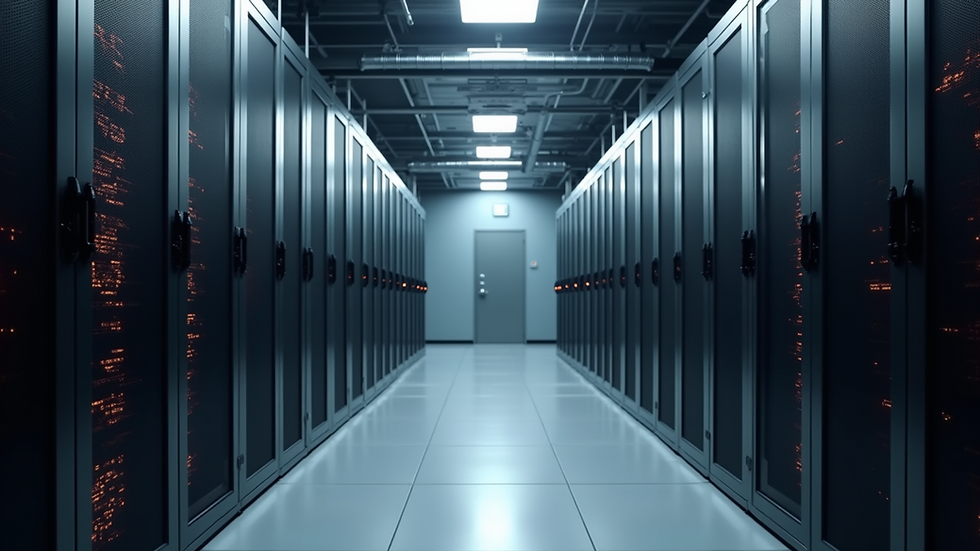The Benefits of Recycling Old IT Hardware
- glen belfield

- Jun 26
- 4 min read
Every year, millions of tons of old IT hardware are discarded, contributing to the growing problem of electronic waste. Fortunately, recycling this hardware offers an array of benefits that can positively impact both the environment and your finances. In this post, we will explore the advantages of IT hardware recycling and how transitioning to more sustainable practices can benefit your organization.
IT Hardware Recycling
Recycling old IT hardware is an essential practice in today’s digital age. As technology continues to advance, devices become obsolete rapidly. Instead of tossing them in the trash, recycling ensures these items are disposed of properly. This practice helps recover valuable materials and reduces harmful waste.
Did you know that it is estimated that over 50 million tons of e-waste are generated globally each year? This figure underscores the importance of embracing recycling solutions. By recycling old IT equipment, businesses can significantly reduce their carbon footprint while supporting responsible waste management.

Environmental Impact
The environmental benefits of recycling IT hardware cannot be overstated. When computers, servers, and other electronic devices are thrown away, they often end up in landfills. These landfills can leak toxic substances, such as lead and mercury, which can contaminate the soil and groundwater. By recycling, we can divert these harmful materials from the waste stream.
Conserving Resources: Recycling IT hardware conserves valuable resources that would otherwise be exploited through mining and manufacturing. For instance, recycling one million laptops can save the energy equivalent to the electricity used by over 3,500 homes in a year.
Reducing Landfill Waste: Each item recycled means one less item in a landfill. Statistics reveal that around 70% of heavy metals found in landfills come from electronic waste. By recycling, businesses can help minimize this alarming trend.
Decreasing Carbon Emissions: The recycling process generates significantly fewer carbon emissions compared to producing new products from raw materials. For every ton of e-waste recycled, around one ton of CO2 emissions is reduced.

What is Hardware Recycling?
Hardware recycling refers to the process of recovering valuable materials from obsolete or broken electronic equipment. This process typically involves disassembling the devices, sorting materials, and then processing them for reuse.
Electronic devices contain various recyclable materials, including:
Metals: Such as copper, aluminum, and gold, which are typically found in circuit boards and wires.
Plastics: Used in many components, which can be repurposed for various applications.
Glass: Commonly found in screens, which can be recycled into new glass products.
By recycling hardware, businesses can contribute to the circular economy—a system in which products are designed to be reused and recycled, minimizing waste and resource consumption.
Financial Benefits
In addition to environmental advantages, there are financial incentives associated with recycling old IT hardware. Here are a few ways recycling can translate into savings for your business:
Cost Savings: Disposing of e-waste can be expensive, especially if fines for improper disposal are incurred. Recycling can eliminate these costs and even generate revenue from the sale of recovered materials.
Tax Benefits: Many countries offer tax deductions for businesses that donate or recycle old equipment. This not only provides a financial incentive but also enhances your corporate social responsibility profile.
Reduced Storage Costs: Old and unused IT hardware takes up valuable space that could be better utilized. By recycling, businesses can declutter their environments and reduce storage costs.

Building a Sustainable Future
IT hardware recycling is not just about compliance; it is about building a sustainable future. By participating in responsible recycling initiatives, businesses can demonstrate their commitment to reducing waste and protecting the environment.
Partnering with Certified Recyclers: It is crucial to work with certified e-waste recyclers who adhere to proper recycling practices. These organizations ensure that hazardous materials are handled safely and that valuable components are recovered.
Education and Awareness: Providing training for employees about the benefits of hardware recycling can foster a culture of sustainability within your organization. Share reports, statistics, and success stories related to recycling efforts.
Creating a Recycling Policy: Developing a clear recycling policy can guide your organization's efforts in IT hardware recycling. Set goals and track progress to measure the impact of your initiatives.
Incorporating sustainable practices not only helps the environment but can also improve your brand's reputation. Today's consumers are more conscious than ever about supporting businesses that prioritize sustainability.
The Future of IT Hardware Recycling
As technology evolves and more devices become available, the need for responsible disposal will only increase. The future of IT hardware recycling looks promising with advancements in recycling technologies and increased awareness.
Innovative Recycling Techniques: Research is ongoing to develop new methods for recycling that increase efficiency and recovery rates. Innovations in material recovery and processing will lead to greener processes.
Legislative Support: Governments worldwide are beginning to implement stricter regulations regarding e-waste management. As laws become more demanding, businesses will need to elevate their recycling efforts.
Consumer Engagement: The public's perception of recycling is changing. A growing number of consumers are seeking to work with companies that share their values regarding sustainability. Engaging consumers in recycling initiatives can foster lasting loyalty.
The adoption of IT hardware recycling practices is crucial for conserving natural resources, safeguarding the environment, and ensuring a sustainable future. By embracing recycling, you not only serve your organization’s best interests but also contribute to a larger, global effort in preserving the planet.
For more information on how to recycle your old IT hardware, explore the services provided by it hardware recycling. Together, we can make a difference.




Comentarios